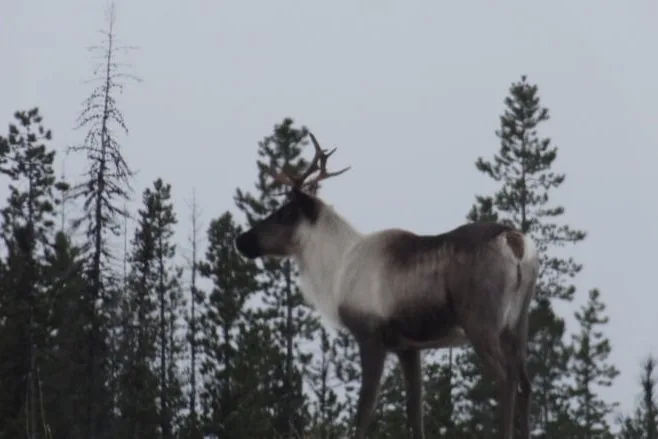
Habitat repair shifts predator-prey dynamics of caribou and wolves: Study
New Alberta research suggests that the restoration of habitat may improve at-risk caribou populations.
The study by the caribou monitoring unit of the Alberta Biodiversity Monitoring Institute looked at restoration efforts on human-made "linear features" in boreal forests and whether that work deters predators from hunting woodland caribou.
SEE ALSO: Surprising find of rare fossil with skin excites scientific community
These linear features — like seismic lines, pipelines and roads used to access oil and gas reserves — act as highways for wolves to prey on caribou, the unit says.
Melanie Dickie, the unit's research co-ordinator, said revegetating these areas is key to restoring natural predator-prey dynamics.
"These restoration treatments are designed to re-establish the forest cover over the long term, but they also create obstacles which may slow down predators, which could lead to reduced predation on caribou," Dickie said.
The study set up cameras to look at whether revegetated areas would slow down both wolves and caribou. The results showed the restoration slowed down the speed of wolves by 23 per cent and of caribou by about 40 per cent, Dickie said.

Alberta's Caribou Monitoring Unit has released new research suggesting that the restoration of habitat may improve caribou populations. (Andrew Kurjata/CBC)
"Slowing both the predators and their prey is then expected to reduce the encounter rates. If you're moving around your environment less, you're less likely to encounter somebody else," she said.
The data was collected over a three- to four-year period, comparing restored areas with areas that had not been revegetated.
Carolyn Campbell, conservation director with the Alberta Wilderness Association, said the institute's work is encouraging but said more research is needed.
"There needs to be more and longer term research and a larger sample size," Campbell said. "But meanwhile it seems as though this should continue."
WATCH: Top 5 animal encounters from this Canadian photographer
Campbell added since it takes years for the area to revegetate, it is important to continue treating the areas for long-term effects.
A 2019 University of British Columbia study published in the journal Biological Conservation showed that most predators and prey used the restored seismic lines about as much as they used the unrestored lines.
Campbell said in spite of this, restoring the original state of Alberta's boreal forests over time will force the natural dynamic between wolves and caribou to return.
"We really need to keep studying, and I think, keep taking actions to reduce that overall disturbance so that we're sure we're doing the right things, not just for caribou, but because they indicate good habitat conditions for other sensitive wildlife."
The story, written by Katarina Szulc, was originally published for CBC News.





